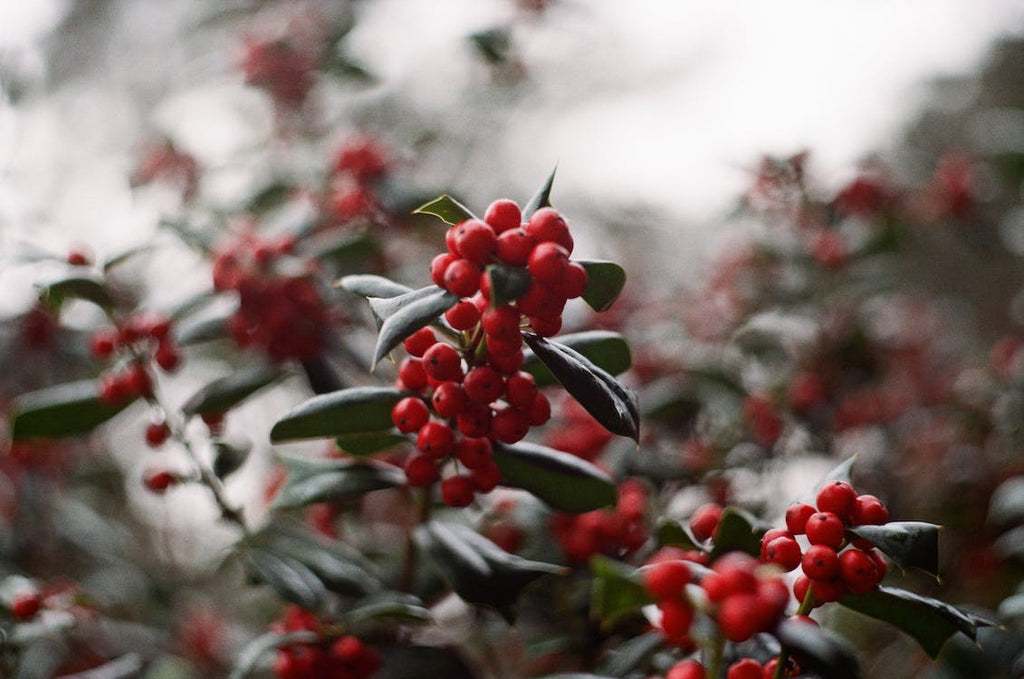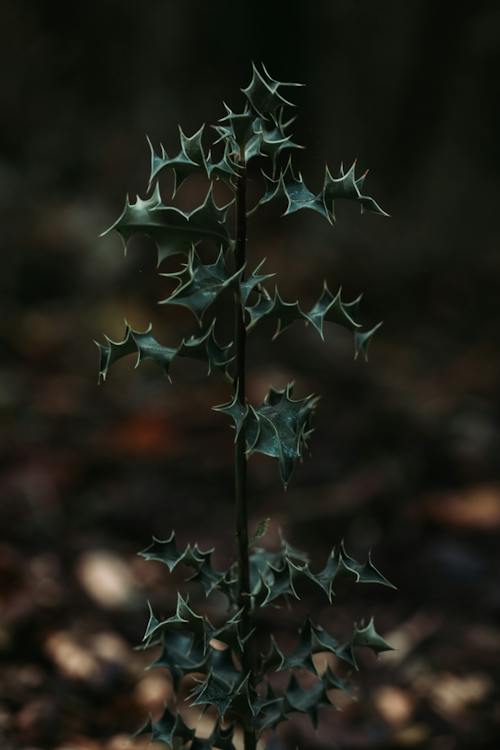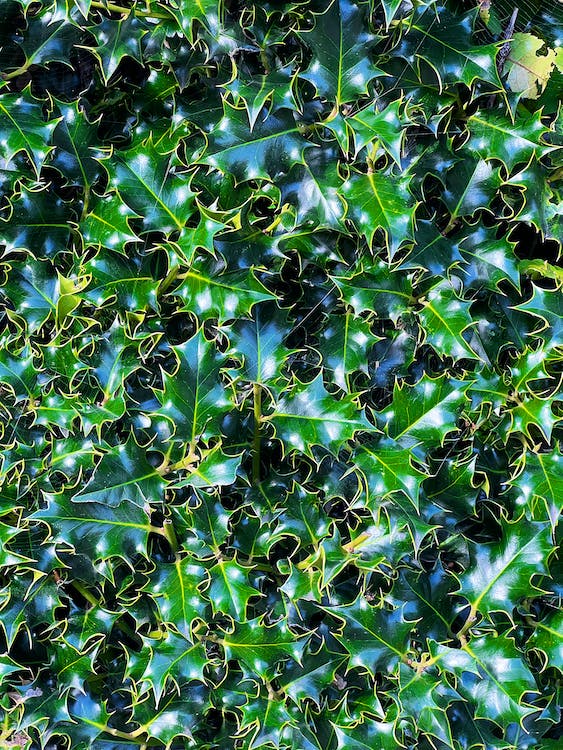
During the holiday season, we love to use plants to decorate. Christmas trees, evergreen garlands, and poinsettias abound, but the distinctive leaves and berries of the holly plant also appear in holiday décor. While holly is a very common plant in both landscaping and for decorative purposes, many of us don’t know much about it. As it turns out, this festive winter plant is pretty interesting in its own right, so let’s dig in and learn more about this family of plants.
A quick safety note: Ilex aquifolium produces bright red berries that are toxic to both humans and animals. While holly makes a great decorative plant, this is something to be aware of when using it in your home. Bringing the greens inside is generally safe as small children and pets are less likely to eat them, but the berries are best left elsewhere. 
The Botany of Holly
While there are over 500 members of the genus Ilex, the most commonly used in landscaping, gardening, and decoration is Ilex aquifolium. A native of northwestern Europe, this adaptable plant is now widely grown throughout the temperate and subtropical zones of the world. Ilex aquifolium can be surprising tricky to identify, due to the number of shapes it can take—sometimes it’s grown as a bush or shrub, but when left to its own devices it can become a tree up to 30 feet/10m tall! With a number of cultivars available to gardeners and landscapers, holly appears in many outdoor spaces due to its ease of maintenance, tolerance of both heat and cold, and drought-resistance. It’s so successful in adapting to new spaces that it’s considered an invasive in parts of the US and Canada.
While Ilex aquifolium does tolerate a variety of conditions—often serving as a pioneer species in disturbed areas—it does prefer shady spaces with moist soil. In the wild it’s often found growing among older stands of oak trees for that reason. This is part of its biological niche: by forming dense undergrowth, holly provides shelter to many birds and animals during the winter months. For small birds in particular, the spiny leaves of the holly plant can help keep predators away. This makes it an especially appealing addition to bird-friendly gardens and other spaces intended to support wildlife.

Holly as a Holiday Plant
So why do we use holly as a holiday plant? As with the plant itself, the roots of this tradition go back to Europe, a long time ago. As an evergreen plant, holly became a festive decoration for wintertime celebrations. The ancient Roman festival of Saturnalia—celebrated in December and so raucous that the name is still used to describe a really wild party—frequently included the greens and berries of holly as part of its décor. Meanwhile in the ancient British Isles, holly was one of the few evergreens available and served as a winter-long symbol and reminder that life would return with the spring. As such it appeared during wintertime parties, celebrations, and rituals, and was even used as just home decoration in order to bring some life and color into the house.

As Christianity spread across Europe, local peoples kept the association between holly and this new winter holiday. This became especially prominent in the 19th century when Christmas cards became popular. The art on these cards depicted holiday scenes of snow, holiday celebrations, and Christmas decorations including holly. These became so popular that holly still appears even in secular holiday decorations to this day.
Holly in the Garden
Growing in the home garden is fairly easy—but be advised that this plant does take up a bit of space! There are dozens of Ilex aquifolium varietals to choose from, with some of the more popular ones being “Golden Queen”, “Amber”, Madame Briot”, “Silver Queen” and “Argentea Marginata”. Holly is best planted in early spring or late fall when the weather is cool, and would prefer a space that gets equal parts sun and shade in the sunny part of the year. While holly will tolerate a variety of soil conditions, like many European plants it prefers rich, moist, well-drained soil.
When planting holly, give it plenty of space and dig deep and wide for the root ball. Holly roots run deep and the plant will grow wide, so give it plenty of room to grown. With regular pruning you can keep Ilex aquifolium as a shrub, but if left un pruned it may well become a very majestic tree. This is great in the right garden, but please pick your space accordingly!

There’s a lot more to be said about holly—we’ve only covered one species and its relationship to the holidays. With over 500 members in the Ilex genus, there’s plenty more to be said so be on the lookout for a future blog!

Leave a comment